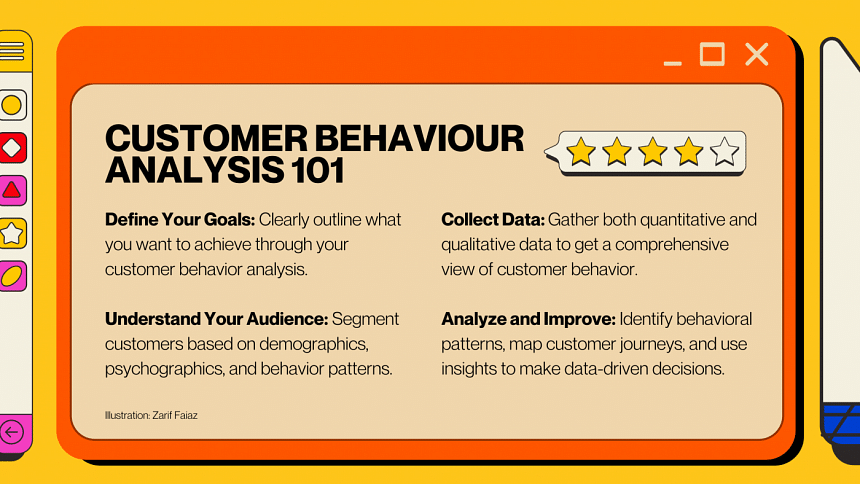How to conduct a customer behaviour analysis the right way

Understanding customer behaviour is crucial for improving products, marketing strategies, and overall satisfaction. Conducting a customer behaviour analysis involves several key steps.
Define your business goals
Begin by defining your goals and desired outcomes. Determine what you want to understand about your customers and set key performance indicators (KPIs) to measure success, such as improving the customer journey or increasing conversion rates.
Segment your audience
Segmenting your audience involves categorising customers based on shared characteristics like demographics, psychographics, and behaviour patterns. Identifying your most valuable customer segments helps tailor your marketing strategies to meet their specific needs.
Collect quantitative and qualitative data
Gather both quantitative data (e.g., purchase history, website visits) and qualitative data (e.g., customer surveys, interviews). This combination provides a comprehensive view of customer behaviour, explaining both how often customers buy a product and why they prefer it.
Analyse customer journeys
Map out customer journeys to identify stages from initial awareness to purchase and post-purchase interactions. This analysis highlights key touchpoints and areas for improvement.
Identify behavioural patterns and trends
Examine behavioural patterns and trends over time to spot consistent behaviours among different customer segments. Understanding these patterns helps inform decisions about inventory management, marketing initiatives, and product development.
Apply findings to improve customer experience
Use insights to make data-driven decisions, such as personalising marketing campaigns and optimising product features. Regularly update and refine your analysis to stay attuned to evolving customer needs and preferences.

 For all latest news, follow The Daily Star's Google News channel.
For all latest news, follow The Daily Star's Google News channel. 








Comments